Search
Bookapotamus (289 KP) rated The Subway Girls in Books
Jul 9, 2018
Charming, interesting and Girl Power!
Soooo charming and loads of girl power!!
The Subway Girls had me roped in from the second I heard about the story. Being in advertising, having lived in Brooklyn, and ALL about being a strong, independent and confident chick - I soared through this book and cannot believe I didn't know about this campaign before! Now, I'm gobbling up every book and article across the internet about it!
The Miss Subways campaign was basically a beauty/modeling contest, which translated into posters of beautiful women splashed across subway as advertising to encourage New Yorkers to ride. But it was also so much more than that. It opened doors for these women, when there weren't many available. Some went on to modeling careers, while others went back to their quiet lives at home with their family - thrilled to have such an exciting experience, even if just once in their lives. One contestant even received 278 marriage proposals!
The book is told by two women: one in the past, one present day. Both strong and ambitious, trying to find and make their way in the world. A world as we know - basically ruled by men.
Charlotte, dreams of a career in advertising - not an easy feat in the 1940's for a woman. Her boyfriend Sam supports her ambitions, while her family, for the most part - does not. She strives to get into any position at these prestigious firms, but when her efforts fail, she aims for a new way of achieving opportunity - the Miss Subways contest. Swept up in the whirlwind of beauty contests, meeting glamorous new friends, all the while fighting with her father - her struggle between doing what's expected of her and what is in her heart threatens to upend all her dreams.
Fast forward 70 years to Olivia, an advertising exec workaholic, desperate for a normal family and steady, loving relationship. While just like Charlotte - she has lofty ambitions to make her mark in the world - but struggles to make herself shine in a (still, of course!) man's world. When Olivia's firm gets a chance to land the NYC subways account - she dives into researching the history of the Miss Subways campaign. The juxtaposition of these two amazing women's lives is so clever and interesting!
I totally understand the personal and professional juggle struggle! And also the strength it takes to accomplish some things that come WAY easier in this world to men. The power of the story in this book is pleasantly overwhelming and so creatively done. I fell in love with Charlotte, her spunk and determination. And Olivia's history is a bit painful, but she never gives up. The girl power is real here, and I loved the story from beginning to end!
The Subway Girls had me roped in from the second I heard about the story. Being in advertising, having lived in Brooklyn, and ALL about being a strong, independent and confident chick - I soared through this book and cannot believe I didn't know about this campaign before! Now, I'm gobbling up every book and article across the internet about it!
The Miss Subways campaign was basically a beauty/modeling contest, which translated into posters of beautiful women splashed across subway as advertising to encourage New Yorkers to ride. But it was also so much more than that. It opened doors for these women, when there weren't many available. Some went on to modeling careers, while others went back to their quiet lives at home with their family - thrilled to have such an exciting experience, even if just once in their lives. One contestant even received 278 marriage proposals!
The book is told by two women: one in the past, one present day. Both strong and ambitious, trying to find and make their way in the world. A world as we know - basically ruled by men.
Charlotte, dreams of a career in advertising - not an easy feat in the 1940's for a woman. Her boyfriend Sam supports her ambitions, while her family, for the most part - does not. She strives to get into any position at these prestigious firms, but when her efforts fail, she aims for a new way of achieving opportunity - the Miss Subways contest. Swept up in the whirlwind of beauty contests, meeting glamorous new friends, all the while fighting with her father - her struggle between doing what's expected of her and what is in her heart threatens to upend all her dreams.
Fast forward 70 years to Olivia, an advertising exec workaholic, desperate for a normal family and steady, loving relationship. While just like Charlotte - she has lofty ambitions to make her mark in the world - but struggles to make herself shine in a (still, of course!) man's world. When Olivia's firm gets a chance to land the NYC subways account - she dives into researching the history of the Miss Subways campaign. The juxtaposition of these two amazing women's lives is so clever and interesting!
I totally understand the personal and professional juggle struggle! And also the strength it takes to accomplish some things that come WAY easier in this world to men. The power of the story in this book is pleasantly overwhelming and so creatively done. I fell in love with Charlotte, her spunk and determination. And Olivia's history is a bit painful, but she never gives up. The girl power is real here, and I loved the story from beginning to end!
Gareth von Kallenbach (980 KP) rated Avengers: Endgame (2019) in Movies
Jun 19, 2019
The epic Marvel Saga that started over ten years ago has been building up to the inevitable clash with the powerful tyrant Thanos (Josh Brolin). Last year’s “Avengers: Infinity War” set the stage for the highly-anticipated conclusion; “Avengers: End Game” and at long last it has arrived.
Picking up shortly after the events of the last film, the Avengers must deal with the aftermath of what Thanos has done. The team is naturally divided between wanting revenge, wanting to set things right, and just wanting to take what they have and go on.
As time passes and they struggle to accept the reality of their situation; an unexpected individual returns and with them comes the seeds of a new plan to make things right. Naturally Tony Stark (Robert Downey Jr.) is skeptical but eventually warms to the possibilities of the idea thanks to a new scientific breakthrough that makes it possible.
Inspired, Tony sets out to put an elaborate plan in motion that will allow the team to try to fix things and to stop Thanos once and for all.
What follows is an extended and at times nostalgic heist where various members of the team work to assemble the pieces needed for the plan as they believe they only have one chance to make things right.
The film is essentially three acts in one. The first deals with the recap and expansion of their situation and the planning. The second act is basically a heist where action and comedy are blended with some touching moments.
This all leads to the final act which is the FX laden set piece where the ensemble cast gathers to fight the forces of evil in a battle to save the Universe.
The film is epic in scale and length as it clocks in at over three hours but the movie is filled with so much content that the time goes by quickly and you have a hard time believing three hours have elapsed.
It is also a difficult film to review as you cannot recap elements of the film in any great detail without giving away elements that are sure to delight the fans. Suffice it to say that my only real issue with the film and it was minor; was that it took a while to get to the action but at least there was plenty to keep you entertained along the way.
As this phase of the Marvel Film Universe winds down and plans are put in place for the next five years; “Avengers: End Game” is a satisfying conclusion to the epic saga that was started many years ago and weaves elements of many of the past Marvel films into an entertaining tale which features all of the best elements that have made the series of films such big hits.
http://sknr.net/2019/04/23/avengers-endgame/
Picking up shortly after the events of the last film, the Avengers must deal with the aftermath of what Thanos has done. The team is naturally divided between wanting revenge, wanting to set things right, and just wanting to take what they have and go on.
As time passes and they struggle to accept the reality of their situation; an unexpected individual returns and with them comes the seeds of a new plan to make things right. Naturally Tony Stark (Robert Downey Jr.) is skeptical but eventually warms to the possibilities of the idea thanks to a new scientific breakthrough that makes it possible.
Inspired, Tony sets out to put an elaborate plan in motion that will allow the team to try to fix things and to stop Thanos once and for all.
What follows is an extended and at times nostalgic heist where various members of the team work to assemble the pieces needed for the plan as they believe they only have one chance to make things right.
The film is essentially three acts in one. The first deals with the recap and expansion of their situation and the planning. The second act is basically a heist where action and comedy are blended with some touching moments.
This all leads to the final act which is the FX laden set piece where the ensemble cast gathers to fight the forces of evil in a battle to save the Universe.
The film is epic in scale and length as it clocks in at over three hours but the movie is filled with so much content that the time goes by quickly and you have a hard time believing three hours have elapsed.
It is also a difficult film to review as you cannot recap elements of the film in any great detail without giving away elements that are sure to delight the fans. Suffice it to say that my only real issue with the film and it was minor; was that it took a while to get to the action but at least there was plenty to keep you entertained along the way.
As this phase of the Marvel Film Universe winds down and plans are put in place for the next five years; “Avengers: End Game” is a satisfying conclusion to the epic saga that was started many years ago and weaves elements of many of the past Marvel films into an entertaining tale which features all of the best elements that have made the series of films such big hits.
http://sknr.net/2019/04/23/avengers-endgame/
Gareth von Kallenbach (980 KP) rated Teen Spirit (2019) in Movies
Jul 2, 2019
Seventeen year old Violet (Elle Fanning) loves to sing. She spends every free moment listening to her iPod or singing. But since her father left Violet and her mother alone, Marla (Agnieszka Grochowska), on a small farm on Isle of Wight, she has very little free time. Each morning, she feeds and cares for the animals on the farm before she heads to school. After school and every weekend she waits tables. Each night secretly she heads to a bar to sing for extra money to help save the farm, but also to have a chance to sing. When she sees a billboard advertising Teen Spirit, a singing competition show, she sees an opportunity to do the one thing that brings her joy and also help get her a better life. The only problem is that she will have to do it without her mother finding out. Since she is under eighteen she has to convince someone to act as her guardian. She asks an old drunk at the bar, Vlad (Zlatko Buric), who loves her singing to go with her. She soon finds out that the disheveled looking old Vlad used to be a famous opera singer. When she finds out she makes it to the second round Vlad helps convince her mother that she should continue chasing her dream with his help. Even though Violet is going against much more experienced and refined competition she is focus on continuing to chase her dream and make it to the Finals in London.
Teen Spirit is the directorial debut for Max Minghella who also wrote the film (written also The 9th Life of Louis Drax, actor in TVs The Handmaid’s Tale). The story was familiar, a small town girl with big dreams and talent trying to overcome overwhelming odds to accomplish a goal. But it is told in a unique way and I would call it a fresh take on the “Cinderella” story. The visuals were unique and interesting. Most of the singing scenes, and not just Violet, were up close or focused on the singer with the background out of focus. It was an original and interesting way to visually tell the story. Elle Fanning does a good job as the protagonist. She is both bold and vulnerable in the film. Zlatko Buric did a marvelous job and brought some much needed light moments in an overall darker film. I thought the music was good but maybe not my cup of tea.
I thought that overall this was an enjoyable film. Not really something I would generally seek out to watch but was originally made and had interesting characters. It is the same old story though and minus some originality in how it gets through the story the outcome is predictable. My wife enjoyed it a little more than I did so it would be a good date movie. Personally worth a stream or rental but not really theater prices.
Teen Spirit is the directorial debut for Max Minghella who also wrote the film (written also The 9th Life of Louis Drax, actor in TVs The Handmaid’s Tale). The story was familiar, a small town girl with big dreams and talent trying to overcome overwhelming odds to accomplish a goal. But it is told in a unique way and I would call it a fresh take on the “Cinderella” story. The visuals were unique and interesting. Most of the singing scenes, and not just Violet, were up close or focused on the singer with the background out of focus. It was an original and interesting way to visually tell the story. Elle Fanning does a good job as the protagonist. She is both bold and vulnerable in the film. Zlatko Buric did a marvelous job and brought some much needed light moments in an overall darker film. I thought the music was good but maybe not my cup of tea.
I thought that overall this was an enjoyable film. Not really something I would generally seek out to watch but was originally made and had interesting characters. It is the same old story though and minus some originality in how it gets through the story the outcome is predictable. My wife enjoyed it a little more than I did so it would be a good date movie. Personally worth a stream or rental but not really theater prices.
Sophia (Bookwyrming Thoughts) (530 KP) rated Seizure (Virals, #2) in Books
Jan 23, 2020
Original Review posted on <a href="http://bookwyrming-thoughts.blogspot.com/2013/03/review-seizure-by-kathy-reichs.html">Bookwyrming Thoughts</a>
Formatting may be lost due to copy and paste
I had no clue why the title was Seizure. For all I knew, seizure meant something to do with a stroke or a heart attack and could possibly result in death if not fixed ASAP. I could be wrong with that definition as well. What I never knew however, was the other definition. The Dictionary enlightened me:
<img src="http://2.bp.blogspot.com/-2czRrDxmYY8/UUEOb7ipebI/AAAAAAAABKE/7MBpVauz380/s320/Seizure+Definition.JPG"; />
I guess I was partially right. Apparently there goes proof I'm not a walking/talking dictionary. Living proof. I'm honestly better off as a spellchecker any day. I must be bored if I did know the definition for every word that exists. Extremely bored. To the point of desperation. Which isn't happening any day until the zombie apocalypse at the least.
Seizure is the second novel in the Virals series (first book is Virals, but my review for it never existed on this planet because my book blogging life never existed at the time) written by Kathy Reichs. It's been awhile after the Virals have transformed from a super-virus. Due to financial problems, Loggerhead Island is at risk to be shut down, and the Virals may have to separate, facing the super-virus on their own. At least until Tory Brennan hears about Anne Bonny's legend. It's said that her treasure is buried right in Charles Town, but no one has succeeded in finding it for around 3 centuries.
What I like about Seizure is the storyline. It's creative, and it twists a legend (I don't know the actual legend though) to fit in with what's going on with the Virals after their transformation. I also love how the characters have changed a lot from the first novel, or at least, most of them, and how there are new characters introduced. Whitney's still as annoying as before (just get out of Tory's hair already! Dx) and Chance hasn't changed much. As for everyone else? Well, I can't say. I can say they changed, but I can't say how. I might as well tape an index card on my forehead with the words SPOILER.
What I dislike? My prediction (always. I fear I'm aiming correctly... even though I have terrible accuracy). I sense a love triangle coming soon. And as typical as it goes with love triangles in YA, it might get ugly with the tension. The best part about that though? I might be off the mark. Or I may be bull's eye (I hope not!). Don't take my prediction for granted. It's just a thought. I might be wrong, or I might be right. I guess we'll see.
Speaking of which, the third book in the series, Code, came out last Wednesday, March 12. Who's excited for a new Virals adventure? :D
Formatting may be lost due to copy and paste
I had no clue why the title was Seizure. For all I knew, seizure meant something to do with a stroke or a heart attack and could possibly result in death if not fixed ASAP. I could be wrong with that definition as well. What I never knew however, was the other definition. The Dictionary enlightened me:
<img src="http://2.bp.blogspot.com/-2czRrDxmYY8/UUEOb7ipebI/AAAAAAAABKE/7MBpVauz380/s320/Seizure+Definition.JPG"; />
I guess I was partially right. Apparently there goes proof I'm not a walking/talking dictionary. Living proof. I'm honestly better off as a spellchecker any day. I must be bored if I did know the definition for every word that exists. Extremely bored. To the point of desperation. Which isn't happening any day until the zombie apocalypse at the least.
Seizure is the second novel in the Virals series (first book is Virals, but my review for it never existed on this planet because my book blogging life never existed at the time) written by Kathy Reichs. It's been awhile after the Virals have transformed from a super-virus. Due to financial problems, Loggerhead Island is at risk to be shut down, and the Virals may have to separate, facing the super-virus on their own. At least until Tory Brennan hears about Anne Bonny's legend. It's said that her treasure is buried right in Charles Town, but no one has succeeded in finding it for around 3 centuries.
What I like about Seizure is the storyline. It's creative, and it twists a legend (I don't know the actual legend though) to fit in with what's going on with the Virals after their transformation. I also love how the characters have changed a lot from the first novel, or at least, most of them, and how there are new characters introduced. Whitney's still as annoying as before (just get out of Tory's hair already! Dx) and Chance hasn't changed much. As for everyone else? Well, I can't say. I can say they changed, but I can't say how. I might as well tape an index card on my forehead with the words SPOILER.
What I dislike? My prediction (always. I fear I'm aiming correctly... even though I have terrible accuracy). I sense a love triangle coming soon. And as typical as it goes with love triangles in YA, it might get ugly with the tension. The best part about that though? I might be off the mark. Or I may be bull's eye (I hope not!). Don't take my prediction for granted. It's just a thought. I might be wrong, or I might be right. I guess we'll see.
Speaking of which, the third book in the series, Code, came out last Wednesday, March 12. Who's excited for a new Virals adventure? :D
SU
Schulz und Schulz: St Trinitatis Leipzig
Wolfgang Jean and Stefan Muller
Book
Text in English & German. Three places mark the chequered history of the provost church of St...
BookInspector (124 KP) rated On the Bright Side in Books
Sep 24, 2020
More reviews can be found on https://bbookinspector.wordpress.com
This is the second diary of Mr H. Groen, where he shares with the reader a year of his life in one of Amsterdam’s elderly care homes, and I really found it fascinating. I didn’t have the chance to read his first diary, however, I found that this book can be easily understood by a first-time reader like myself because Hendrik does a great job by introducing and describing all the residents of his care home.
The main character in this book is, of course, Hendrik Groen, and the whole book was told from his perspective. I found him absolutely adorable. He is incredibly bright minded, funny, and interesting personality. I really enjoyed the way he introduced all his friends and nemesis, his and Everet’s (best friend) sarcastic thoughts and actions got me laughing out loud many times. I liked the way Hendrik showed through his diary, that elderly care homes can be an actually fun place to be, where you are occupied and never alone. And when I will grow old I would not mind spending my old days in such establishment.
Even though this book was from author’s perspective, Hendrik shared many events which he saw on TV or read it in papers throughout the year of 2015, and I loved the way he incorporated different resident’s thoughts about those events. My most favourite thing in this book was the Old-But-Not-Dead club and their members. Even though they hardly can walk, they still choose to explore life and it’s offerings, and it is just admirable. I think this book is very relatable to all the elderly because Groen is sharing not only good stuff and jokes, he is sharing the cruel reality as well. And I did like that a lot, it makes it more realistic and believable.
The writing style is easy to read and very witty, sarcastic and enjoyable. I had to twist my tongue a little bit while pronouncing the Dutch surnames, but that didn’t bother me much. The chapters are short and sweet and the book went quite quick for me. It has a lot of going on in every chapter, but sometimes my mind tended to wonder of, as it was a little bit monotonous sometimes. Hendrik ended this book with a very positive message and big hopes for his fiction novel, which I will be waiting impatiently for. So, to conclude, if your grandparents are still alive, you have to get them this book. I bet they would be able to relate and if not they would have a great laugh while reading it. I had an emotional rollercoaster while reading it, it made happy, pity, sad, excited, and It just made me respect our elderly more, because they all are different, unique and fascinating. I strongly recommend it to all as it is a perfect insight into our possible future. Enjoy 🙂
This is the second diary of Mr H. Groen, where he shares with the reader a year of his life in one of Amsterdam’s elderly care homes, and I really found it fascinating. I didn’t have the chance to read his first diary, however, I found that this book can be easily understood by a first-time reader like myself because Hendrik does a great job by introducing and describing all the residents of his care home.
The main character in this book is, of course, Hendrik Groen, and the whole book was told from his perspective. I found him absolutely adorable. He is incredibly bright minded, funny, and interesting personality. I really enjoyed the way he introduced all his friends and nemesis, his and Everet’s (best friend) sarcastic thoughts and actions got me laughing out loud many times. I liked the way Hendrik showed through his diary, that elderly care homes can be an actually fun place to be, where you are occupied and never alone. And when I will grow old I would not mind spending my old days in such establishment.
Even though this book was from author’s perspective, Hendrik shared many events which he saw on TV or read it in papers throughout the year of 2015, and I loved the way he incorporated different resident’s thoughts about those events. My most favourite thing in this book was the Old-But-Not-Dead club and their members. Even though they hardly can walk, they still choose to explore life and it’s offerings, and it is just admirable. I think this book is very relatable to all the elderly because Groen is sharing not only good stuff and jokes, he is sharing the cruel reality as well. And I did like that a lot, it makes it more realistic and believable.
The writing style is easy to read and very witty, sarcastic and enjoyable. I had to twist my tongue a little bit while pronouncing the Dutch surnames, but that didn’t bother me much. The chapters are short and sweet and the book went quite quick for me. It has a lot of going on in every chapter, but sometimes my mind tended to wonder of, as it was a little bit monotonous sometimes. Hendrik ended this book with a very positive message and big hopes for his fiction novel, which I will be waiting impatiently for. So, to conclude, if your grandparents are still alive, you have to get them this book. I bet they would be able to relate and if not they would have a great laugh while reading it. I had an emotional rollercoaster while reading it, it made happy, pity, sad, excited, and It just made me respect our elderly more, because they all are different, unique and fascinating. I strongly recommend it to all as it is a perfect insight into our possible future. Enjoy 🙂

ProCamera HD
Photo & Video and Education
App
ProCamera HD, the gold standard for professional iOS photography, provides a highly intuitive...

Mingle2 Online Dating Chat App
Dating, Lifestyle and Social Networking
App
With millions of users, Mingle2 is the best dating app to meet, chat, date and hangout with people...
Emma @ The Movies (1786 KP) rated A Quiet Place: Part II (2021) in Movies
Sep 25, 2021
One of the many long time coming films from before the pandemonium finally made its way to our screens. The sequel to the film that made us uncomfortable to eat snacks while we were at the cinema... A Quiet Place Part II came out to an excited crowd going back to the movies.
The Abbots have survived the attack on their family and found a way to get the upper hand in the fight against the monsters. They need to move on, beyond the boundaries they're set up for themselves. But what is out there blocking their way? Friend or foe? There's no way of knowing.
I was sceptical about a second film, there was a perfectly good intriguing ending to the first, and sequels aren't always the follow-ups we hope for. Would there be enough to stretch out into a decent story?
Emily Blunt was Emily Blunt. The expected powerful performance, but it was nice to see her taking a slight back seat to allow other characters to take the lead... whether I enjoyed that or not.
The biggest change on that front was giving Regan a bigger piece of the action, and the chance to show the leadership that is now missing since the death of her father. And we get an interesting pairing with her and Cillian Murphy, there's a bond made that leads them to learn about each other and it was nice, while a little sad, to see her with a new father figure in her life for a while.
Murphy's character of Emmett seems far more at home with his life as a "lone survivor" than he did as a family man. He's bunkered down outside their radius and got himself a nice little set up... but... there's one very large point that is not addressed during the films, and it's quick frankly too odd (and slightly sinister) for them to have avoided. Apart from that, Emmett does unfold nicely through the film, and he really adjusts well to being reconnected with the Abbotts.
As much as I like Noah Jupe, I found Marcus to be entirely too frustrating in this film. I don't like to wish ill upon people, but, he deserved to be eaten by a monster, or at least lightly maimed. Reckless and idiotic, he quite frankly didn't deserve any kind of redemption.
Even more so than the first, this film gave me heavy Lost vibes. If you broke some of the scenes down into their vaguest detail and asked people to guess what you were talking about, I'd certainly forgive people for guessing wrong. But yet again it's a suspenseful offering, and I found it hilarious when I fell for the jump scares. Coming out to an almost instant announcement of a third film left me wondering though. What could it do from here? It really felt like it had come to a natural ending.
Originally posted on: https://emmaatthemovies.blogspot.com/2021/09/a-quiet-place-part-ii-movie-review.html
The Abbots have survived the attack on their family and found a way to get the upper hand in the fight against the monsters. They need to move on, beyond the boundaries they're set up for themselves. But what is out there blocking their way? Friend or foe? There's no way of knowing.
I was sceptical about a second film, there was a perfectly good intriguing ending to the first, and sequels aren't always the follow-ups we hope for. Would there be enough to stretch out into a decent story?
Emily Blunt was Emily Blunt. The expected powerful performance, but it was nice to see her taking a slight back seat to allow other characters to take the lead... whether I enjoyed that or not.
The biggest change on that front was giving Regan a bigger piece of the action, and the chance to show the leadership that is now missing since the death of her father. And we get an interesting pairing with her and Cillian Murphy, there's a bond made that leads them to learn about each other and it was nice, while a little sad, to see her with a new father figure in her life for a while.
Murphy's character of Emmett seems far more at home with his life as a "lone survivor" than he did as a family man. He's bunkered down outside their radius and got himself a nice little set up... but... there's one very large point that is not addressed during the films, and it's quick frankly too odd (and slightly sinister) for them to have avoided. Apart from that, Emmett does unfold nicely through the film, and he really adjusts well to being reconnected with the Abbotts.
As much as I like Noah Jupe, I found Marcus to be entirely too frustrating in this film. I don't like to wish ill upon people, but, he deserved to be eaten by a monster, or at least lightly maimed. Reckless and idiotic, he quite frankly didn't deserve any kind of redemption.
Even more so than the first, this film gave me heavy Lost vibes. If you broke some of the scenes down into their vaguest detail and asked people to guess what you were talking about, I'd certainly forgive people for guessing wrong. But yet again it's a suspenseful offering, and I found it hilarious when I fell for the jump scares. Coming out to an almost instant announcement of a third film left me wondering though. What could it do from here? It really felt like it had come to a natural ending.
Originally posted on: https://emmaatthemovies.blogspot.com/2021/09/a-quiet-place-part-ii-movie-review.html
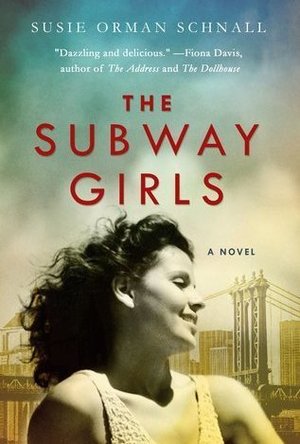
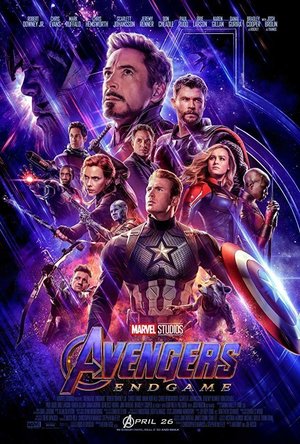
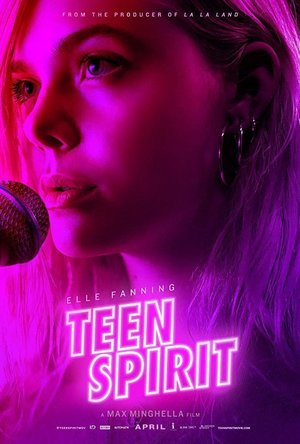


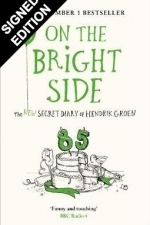

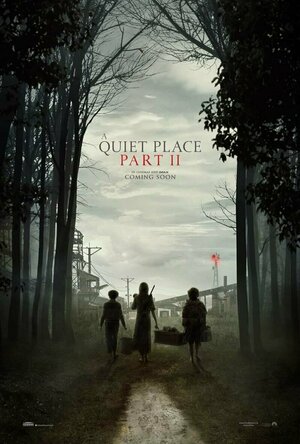
Becka (82 KP) Jul 9, 2018
Becka (82 KP) Jul 9, 2018